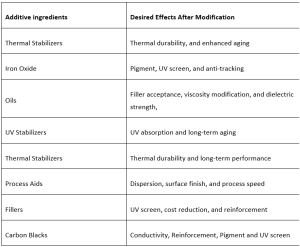When heat shrink technology was introduced initially, the common applications were for electrical insulation of standard cables, joints, and terminations but with the passage of time, industrial needs went beyond the conventional applications to make the products better suitable for the areas having-
- Heavy pollution
- High UV exposure
- Radioactive elements
- Salt fog
- Inflammable entities
- Oil leakage
More Options to Apply Heat Shrink Technology than Ever Before
As the heat shrink technology is evolving fast over decades providing application-specific insulating solutions to vivid industries, end users have more options to choose the heat shrink electrical and corrosion insulation accessories like cable joints, heat shrink tubes, heat shrink couplers, cable end sealing caps, and other heat-shrink power cable accessories to secure the entire installation. A range of heat shrink molded accessories also helps electrical engineers and industry consultants secure congested joints against malfunctioning of different impacts. Heat shrinkable moulded shapes include low voltage breakout, anti-tracking breakout, semi-conductive cable breakout, rain sheds, right angle boot, straight boot, anode cap, etc.
While the majority of heat shrink products are used in normal networking conditions in underground and overhead installations, some products are designed especially for harsh environments. Diameter size, shrink ratio, wall thickness, and length of the tubing are the key parameters to selecting heat shrink accessories. Manufacturers refer to two types of inner diameters – ‘Supplied’ and ‘Recovered’. Longitudinal shrinkage of heat shrink sleeves varies from 5% to 10%. A 3:1 shrink ratio means 67% shrinkage. Heat shrink tubes are sold by referring to their EXPANDED I.D. size.
Why You Need To Focus On Additives While Buying Heat Shrink Accessories
The consequence of formulation change of polyolefin heat-shrink insulation accessories during manufacturing may be complex and may change the entire characteristics for which you are buying the particular product. It is a must to ensure that the combination of different materials will keep the desired characteristics combined with slight changes required for the particular application:
- UV resistance for outdoor applications
- Mechanical properties
- Flame retardant/fire resistance properties
- Electrical properties
- Tracking and erosion
- Oil blocking characteristics
- Radiation resistance
Options for Material Modification of Heat-Shrink Power Cable Accessories
The leading manufacturers of heat-shrink cable accessories use different additives to the base formulation to modify the characteristics of the heat shrink tubes, heat shrink couplers, cable end sealing caps, cable joints and other accessories as per specific requirements for a particular application. The chemical formulation is at the core to achieve a specific and specialized characteristic to make the heat shrink accessories the best suitable for the particular industrial applications addressing other concerns also like cost and ease of maintenance. The following list presents a general overview of the different ingredients used to change the functional and performance properties of heat shrink electrical insulation and corrosion protection accessories-

The top manufacturers of heat shrink accessories provide online assistance also for first-time users to ensure they have the ultimate experience of adopting the most-advanced and time-tested insulation technology.